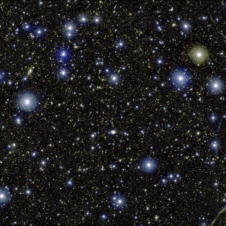Astronomers from the International Centre for Radio Astronomy Research (ICRAR), in collaboration with international teams, have made a startling discovery about a new type of cosmic phenomenon.
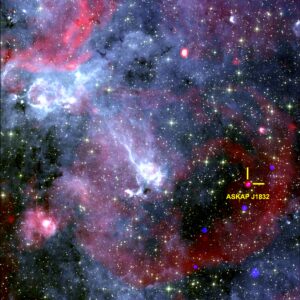
Description: An image of the sky showing the region around ASKAP J1832-0911. X-rays from NASA’s Chandra X-ray Observatory, radio data from the South African MeerKAT radio telescope, and infrared data from NASA’s Spitzer Space Telescope. Credit: Ziteng Wang, ICRAR.
The object, known as ASKAP J1832-0911, emits pulses of radio waves and X-rays for two minutes every 44 minutes. ASKAP J1832-0911 is located in our Milky Way galaxy about 15,000 light-years from Earth.
This is the first time objects like these, called long-period transients (LPTs), have been detected in X-rays. Astronomers hope it may provide insights into the sources of similar mysterious signals observed across the sky.
The team discovered ASKAP J1832-0911 by using the ASKAP radio telescope on Wajarri Country in Australia, owned and operated by Australia’s national science agency, CSIRO. They correlated the radio signals with X-ray pulses detected by NASA’s Chandra X-ray Observatory, which was coincidentally observing the same part of the sky.
“Discovering that ASKAP J1832-0911 was emitting X-rays felt like finding a needle in a haystack,” said lead author Dr Ziteng (Andy) Wang from the Curtin University node of ICRAR.
“The ASKAP radio telescope has a wide field view of the night sky, while Chandra observes only a fraction of it. So, it was fortunate that Chandra observed the same area of the night sky at the same time.”
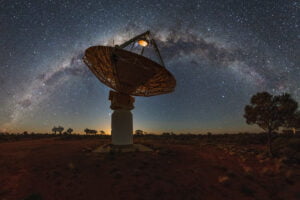
CSIRO’s ASKAP radio telescope on Wajarri Yamaji Country Credit: Alex Cherney
LPTs, which emit radio pulses that occur minutes or hours apart, are a relatively recent discovery. Since their first detection by ICRAR researchers in 2022, ten LPTs have been discovered by astronomers across the world.
Currently, there is no clear explanation for what causes these signals, or why they ‘switch on’ and ‘switch off’ at such long, regular and unusual intervals.
“This object is unlike anything we have seen before,” Dr Wang said.
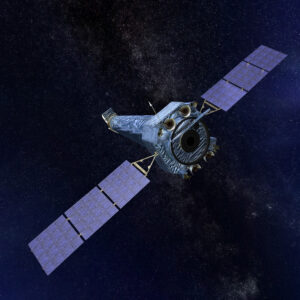
Description: This artist’s illustration depicts NASA’s Chandra X-ray Observatory in space. Credit: NASA/CXC & J. Vaughan
“ASKAP J1831-0911 could be a magnetar (the core of a dead star with powerful magnetic fields), or it could be a pair of stars in a binary system where one of the two is a highly magnetised white dwarf (a low-mass star at the end of its evolution).”
However, even those theories do not fully explain what we are observing. This discovery could indicate a new type of physics or new models of stellar evolution.”
Detecting these objects using both X-rays and radio waves may help astronomers find more examples and learn more about them.
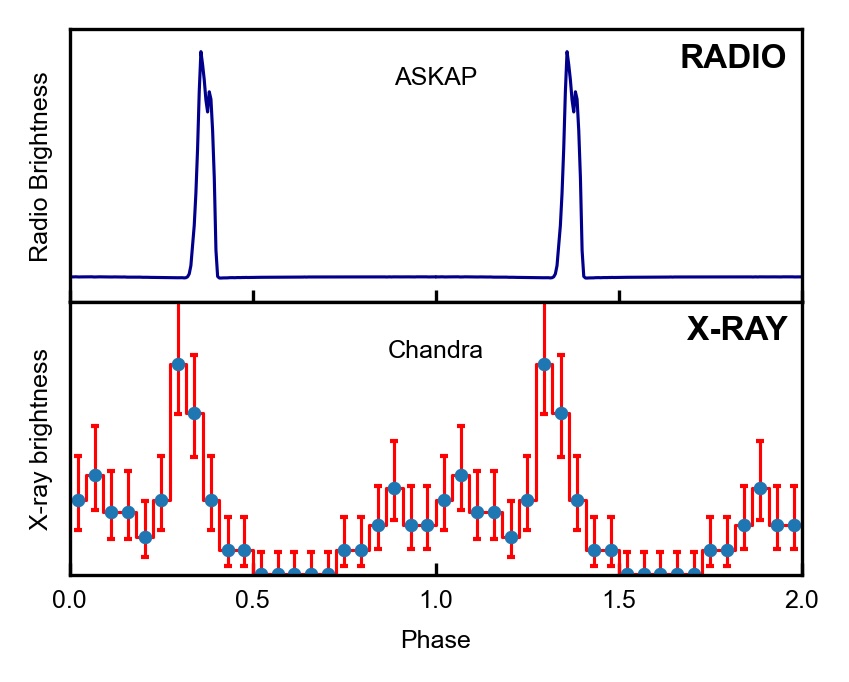
Radio and X-ray lightcurves showing how ASKAP J1832-0911 pulses at both bands. Credit: Ziteng Wang, ICRAR
According to second author Professor Nanda Rea from the Institute of Space Science (ICE-CSIC) and the Institute of Space Studies of Catalonia (IEEC) in Spain, “Finding one such object hints at the existence of many more. The discovery of its transient X-ray emission opens fresh insights into their mysterious nature,”
“What was also truly remarkable is that this study showcases an incredible teamwork effort, with contributions from researchers across the globe with different and complementary expertise,” she said.
The discovery also helps narrow down what the objects might be. Since X-rays are much higher energy than radio waves, any theory must account for both types of emission – a valuable clue, given their nature remains a cosmic mystery.
The paper “Detection of X-ray Emission from a Bright Long-Period Radio Transient” was published overnight in Nature.
MULTIMEDIA
Multimedia assets available here.
MEDIA SUPPORT
Charlene D’Monte
ICRAR Media Contact | charlene.dmonte@icrar.org | +61 468 579 311| +61 8 6488 7758
INTERVIEWS
Dr Andy Wang

